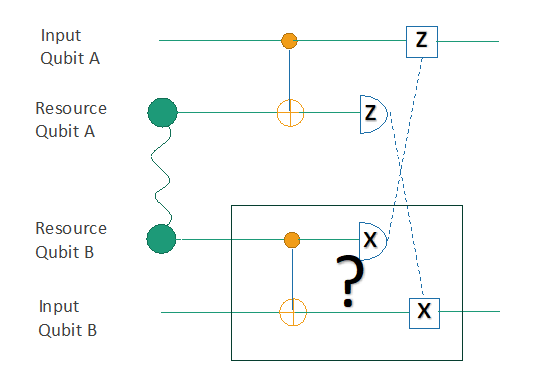Progress Report
Scalable and Robust Integrated Quantum Communication System[4] Distributed Quantum Applications Enabled by Distributed Environments for Quantum Information
Progress until FY2024
1. Outline of the project
This year we extended a quantumness-evaluation theory—originally created for a single-node, single-link setup—to a two-node quantum network, deriving comprehensive metrics that encompass each node’s intrinsic quantumness and the Bell-state fidelity needed for remote-CNOT execution. We also devised a framework that systematizes the information and procedures required to prepare and run quantum-internet applications, adding new rules that embed application-specific data into RuleSet-based protocols and enabling automatic conversion into an intermediate representation (IR) for formal verification, thereby linking protocols seamlessly from the application layer down to the physical layer. In addition, we proposed a quasiprobability-based method that lowers sampling costs when generating entanglement between distant nodes, and, looking toward integration with quantum computing, theoretically identified useful applications for quantum-sensor networks and NISQ devices—for example, an entanglement-enhanced binary-classification scheme in an optical quantum-sensor network inspired by the Deutsch–Jozsa algorithm.
2. Outcome so far
(1) Developed theory that evaluates the quantumness required for remote-CNOT implementation in a system of two single-qubit processors connected by one link, thereby providing a method to assess both individual-node quantumness and overall device quality in a two-node quantum network, including estimation of link Bell-state fidelity.
(2) Proposed a framework that clarifies inter-node communication steps for the preparation and execution phases of quantum-internet applications and introduces new rules embedding application-specific information into RuleSets; designed a function that converts this description into an IR suitable for protocol verification, achieving seamless connectivity across all network layers.

(3) Improved the efficiency of distillation in distributed quantum computing by analyzing the dynamics of distributed quantum sensors and processors and applying a quasiprobability method to NISQ devices, thereby proposing a low-sampling-cost way to generate entanglement between distant nodes at the expectation-value level.

(4) Proposed a binary-classification method for optical quantum-sensor networks that uses entangled light to classify phase distributions, inspired by the Deutsch–Jozsa algorithm, demonstrating high-efficiency classification.
3. Future plans
Aiming to design algorithms and applications that maximize the performance of distributed quantum computation, we will, in the coming fiscal year—which marks a key milestone for our Moonshot goal—shift from design to operation in a platform-agnostic fashion. We intend to derive concrete cost metrics for distributed quantum computing and establish performance-assessment methods geared toward practical uses such as quantum sensing, thereby further deepening and expanding knowledge that supports real-world deployment of quantum information processing.